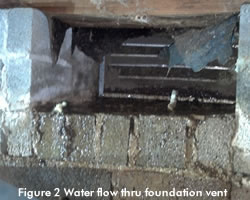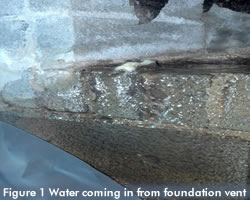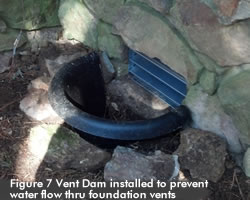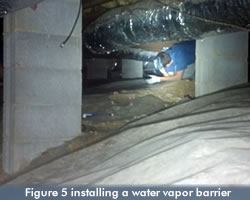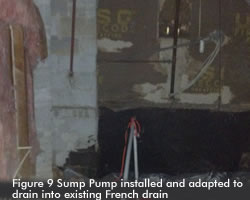
MOISTURE CONTROL
FOUR MISTAKES HOMEOWNERS MAKE FOR THE CONTROL OF MOISTURE
1. Not realizing the significant impact a crawl space can have on the indoor air quality of a home. The crawl space is one of the most confusing and misunderstood areas in a building. Furthermore, because it is not easily accessible, it is also easily forgotten. However, it is one of areas within the building that has the ability to most impact the air quality in the living area of the home. Because of a phenomenon called the stack effect, the air in your crawl space cycles into the living area of your home, taking with it any contaminants in the air of the crawl space. If you have a damp, moldy, unsealed crawlspace, the chance that you have compromised indoor air quality in your home is high.
2. Failure to effectively moisture proof your crawl space.As the saying goes, “out of sight, out of mind.” Taking the time to understand the impact moisture and mold in the crawl space can have on the integrity of the home can give you the tools you need to protect your home and health from the negative effects of mold and poor indoor air quality. We often receive calls after a problem has begun, making the solution much more costly than the prevention would have been. Like foundation vents that are below ground which allows water to flow thru. [See figure 1 and 2]. Something as simple as a vent dam can help prevent this from happing. As well as making sure your downspouts are cleaned out. [See figure 8]. In some cases where water backs up into a crawlspace and doesn’t drain out properly a sump pump may need to be installed. [See figure 9] Owners of new homes can take steps to prevent moisture and mold in the crawl space, saving them the cost of removing the mold and possibly having to correct even worse problems that may have developed because of chronic moisture intrusion. Owners of older homes can prevent further damage by having the crawl space cleaned and a vapor barrier put in place [See figure 3 and 7] or encapsulation of the crawlspace which is still an ongoing debate.
3. Exhausting dryer vents, bathroom vents, or kitchen hood vents into the crawl space or attic.Dryer vents, bathroom vents, or kitchen vent should be exhausted to the outside of the building. We often see these vents terminated in the crawl space or attic. This is adding moisture to the space and often results in raising the relative humidity to greater than 65%, facilitating the growth of mold. Unsuspecting homeowners can go for years unaware of this problem until an issue of moisture and mold arises.
4. Blocking soffit-vents when adding loose fill insulation to the attic.One of the easiest projects a homeowner can do themselves in terms of making their home more energy efficient is adding insulation to the attic. This is most easily accomplished by adding a loose fill insulation, such as cellulose. A common mistake is to blow the insulation into the soffit vents, blocking them. This dramatically decreases the ventilation in the attic, increasing the risk of moisture accumulation in the attic. During the colder months, the moisture in the air can condense on the attic sheathing, facilitating mold growth. To keep the soffit vents from being blocked when adding insulation, install soffit-vent chutes or baffles to help maintain good attic ventilation.
 Little Rock, AR 501-868-3837 | Russellville, AR 479-968-4777 | Hot Springs, AR 501-442-5653 | Fayetteville, AR 479-899-6874
Little Rock, AR 501-868-3837 | Russellville, AR 479-968-4777 | Hot Springs, AR 501-442-5653 | Fayetteville, AR 479-899-6874



